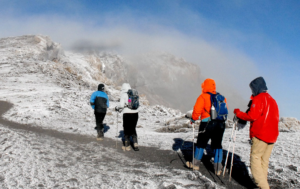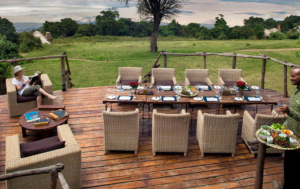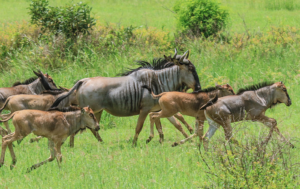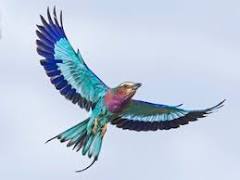Kilimanjaro Safety
Kilimanjaro Safety
Quick Navigation Links
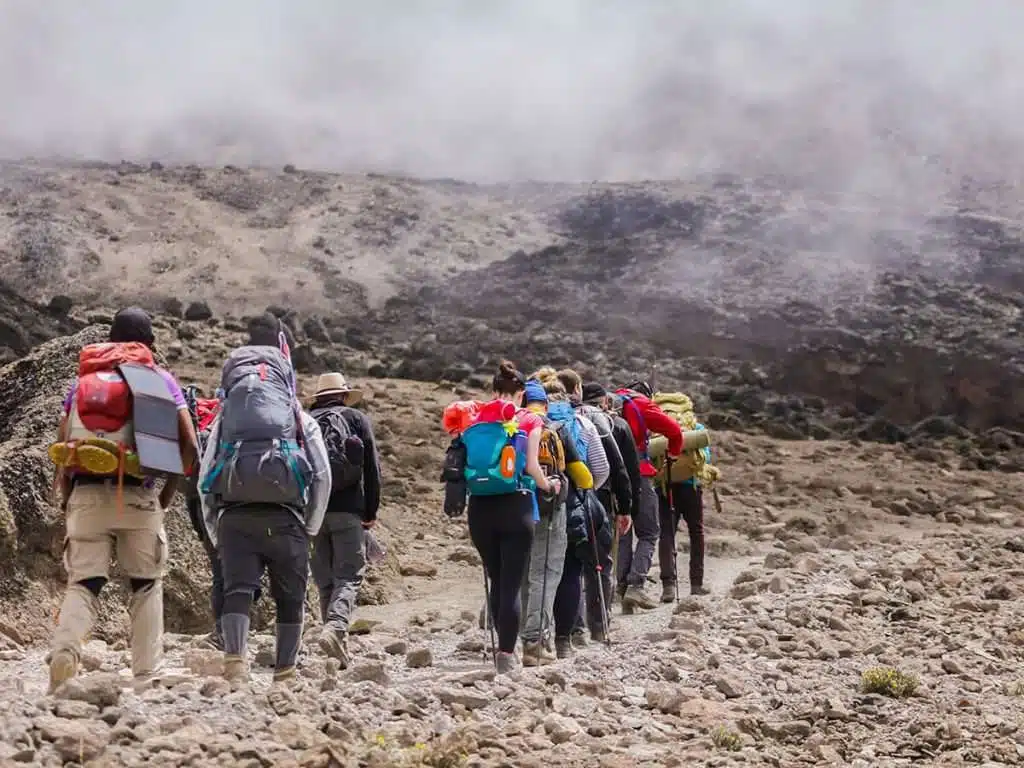
Understanding the Risks Involved in Climbing Kilimanjaro
- Altitude Sickness : As you climb higher, the air pressure drops and the air becomes thinner, making it harder to breathe. This can lead to altitude sickness, ranging from mild symptoms like headaches and nausea to more severe symptoms like shortness of breath, confusion, and even death.
- Weather Conditions : Weather On Kilimanjaro can be unpredictable and extreme, with high winds, heavy rain, and sub-zero temperatures.
- Physical Exertion : Climbing Kilimanjarois a strenuous activity that requires good physical fitness. Depending on your chosen Routes Up Kilimanjaro, the climb can take five to ten days.
- Terrain : The terrain on Kilimanjaro is varied, from rocky paths to steep slopes. And it can be challenging to navigate, particularly in bad weather.
Safety Precautions to Take When Climbing Kilimanjaro
- Choose A Reputable Tour Operator : Choose a tour operator with a good track record for safety and a knowledgeable guide familiar with the mountain and its risks.
- Acclimatize Slowly : Take your time and allow your body to acclimatize to the altitude gradually. Climbing too quickly can increase the risk of altitude sickness.
- Stay Hydrated : Drink plenty of water to stay hydrated and help prevent altitude sickness.
- Dress Appropriately : Dress in layers and bring proper gear for cold, windy, and wet weather conditions.
- Take Breaks : Take frequent breaks to rest and allow your body to adjust to the altitude.
- Follow Your Guide’s Instructions : Listen to your guide’s advice and instructions on how to climb safely.
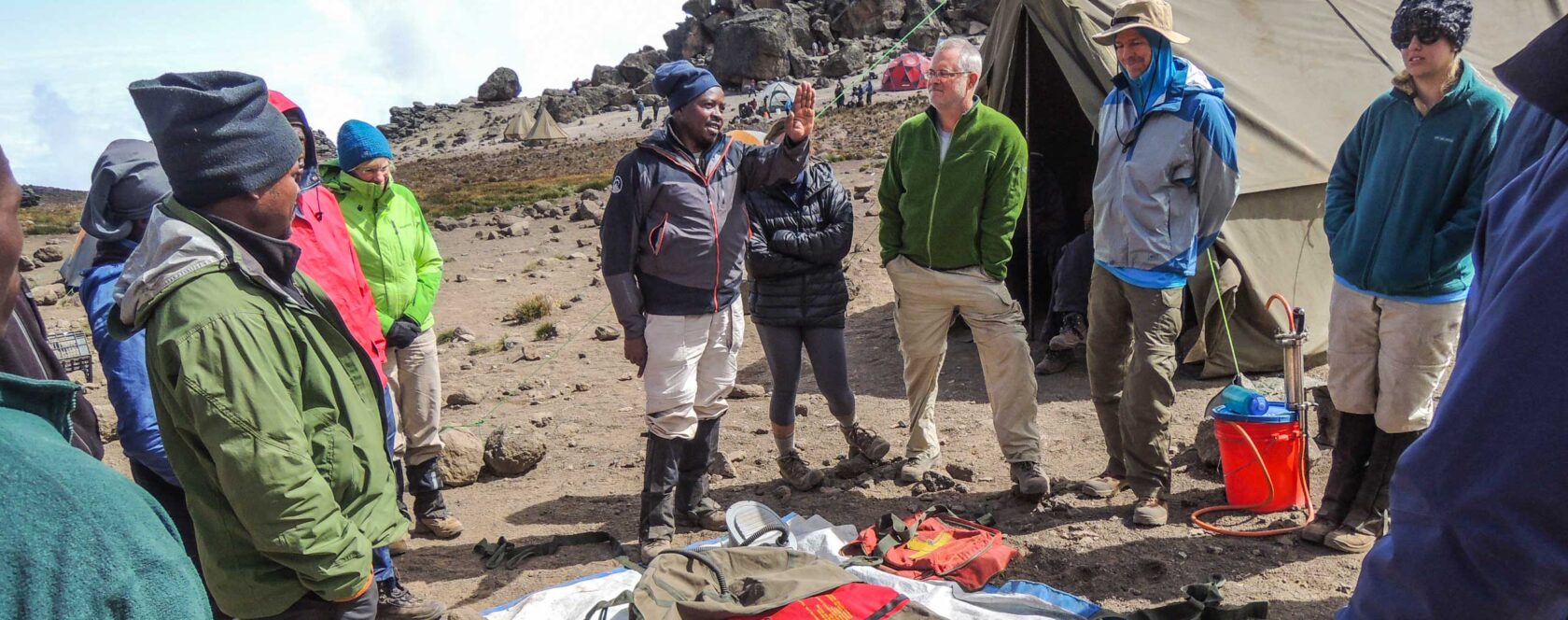
Physical Fitness and Mental Preparedness
Climbing Mount Kilimanjaro is a physically and mentally demanding activity. Here are some tips for preparing yourself for a safe climb:
- Physical Fitness : Kilimanjaro is a strenuous climb that requires good physical fitness. Train for several months before your climb, focusing on cardiovascular and leg exercises to build endurance and stamina.
- Mental Preparedness : Climbing Kilimanjaro can be mentally challenging. Be prepared for the long climb, and remember to take breaks when needed. Use positive self-talk to keep yourself motivated and focused on your goal.
- Altitude Training : Before climbing, consider spending time at a high altitude to help your body acclimate. This can include activities such as hiking or camping at high altitudes.
- Nutrition : Eating a healthy and balanced diet before and during your climb can help you maintain energy levels and avoid altitude sickness. Pack plenty of high-energy snacks and foods.
- Hydration : Staying hydrated is essential for a safe climb. Drink plenty of water before and during your upgrade.
Common Medical Concerns and How to Address Them
- Altitude Sickness : Altitude sickness is a common concern when climbing Kilimanjaro. To avoid it, acclimate slowly, stay hydrated, and consider taking medication like acetazolamide to help prevent symptoms.
- Hypothermia : Hypothermia can occur when exposed to cold and wet conditions. Dress in layers, wear a warm hat and gloves and stay dry to prevent it.
- Dehydration : Dehydration can occur when climbing at high altitudes. To prevent it, drink plenty of water and sports drinks that contain electrolytes.
- Sunburn : The sun is intense at high altitudes. To prevent sunburn, use sunscreen with at least SPF 30 and wear a hat and sunglasses.
- Blisters : Blisters are a common issue when hiking. To prevent them, wear properly fitting boots and use moleskin or blister pads to protect problem areas.
- Injuries:Injuries can occur when climbing Kilimanjaro. To prevent them, use trekking poles to reduce strain on your joints, and take breaks as needed.
How We Work To Keep You Safe on Kilimanjaro
- Firstly, we require all our climbers to fill out a detailed medical questionnaire, which helps us to identify any pre-existing conditions or medications that may affect your climb. If necessary, we may ask for confirmation from your doctor that you are fit to climb.
- Your Kilimanjaro Guidewill also ask about any medications you are taking, including over-the-counter drugs, and whether you plan to use Diamox for acclimatisation.
- We also employ experienced and knowledgeable guides familiar with the mountain and its potential risks. Our guides are trained in first aid and are equipped with medical kits to handle any emergencies that may arise.
- In addition, we also provide our climbers with quality gear and equipment to ensure that they are well-prepared for the cold and wet conditions they may encounter on the mountain.
Take on the challenge of Kilimanjaro with confidence in your safety!
Ultimately, Kilimanjaro Safety should always be the top priority while climbing can be an enriching experience. And at Tanzania Tribe Safaris, we are dedicated to providing our climbers a safe and wonderful experience on Kilimanjaro.
With our experienced guides, quality gear, and comprehensive safety measures, we strive to make your climb a memorable and rewarding adventure. So, without any delay, let’s chat and plan together!
the most awaRded adVentuRe
tour operator in kilimanjaro
We are proud of our 100+ reviews on Tripadvisor, the largest tour review website.
Kilimanjaro Preparation





Kilimanjaro Safety Faq's
What are some common safety risks when climbing Kilimanjaro?
How safe it is to climb Kilimanjaro during the wet season?
Is it safe to climb Kilimanjaro without a guide?
How can I minimize the risk of altitude sickness on Kilimanjaro?
What safety gear should I bring when climbing Kilimanjaro?
How important is physical fitness for safety when climbing Kilimanjaro?
SEE WHO TRUSTED US!
Pizza Hut Breaks World Record with Trusted Delivery Partner, Tanzania Tribe Safari, (aka) summit trails.




